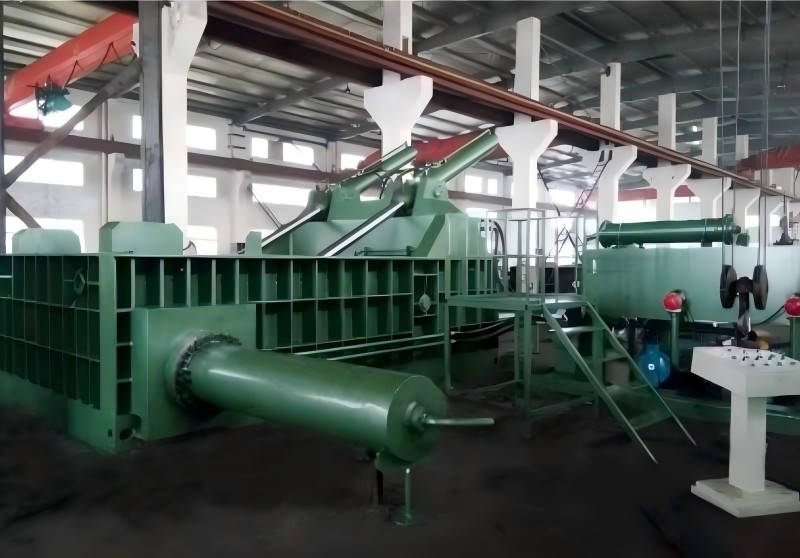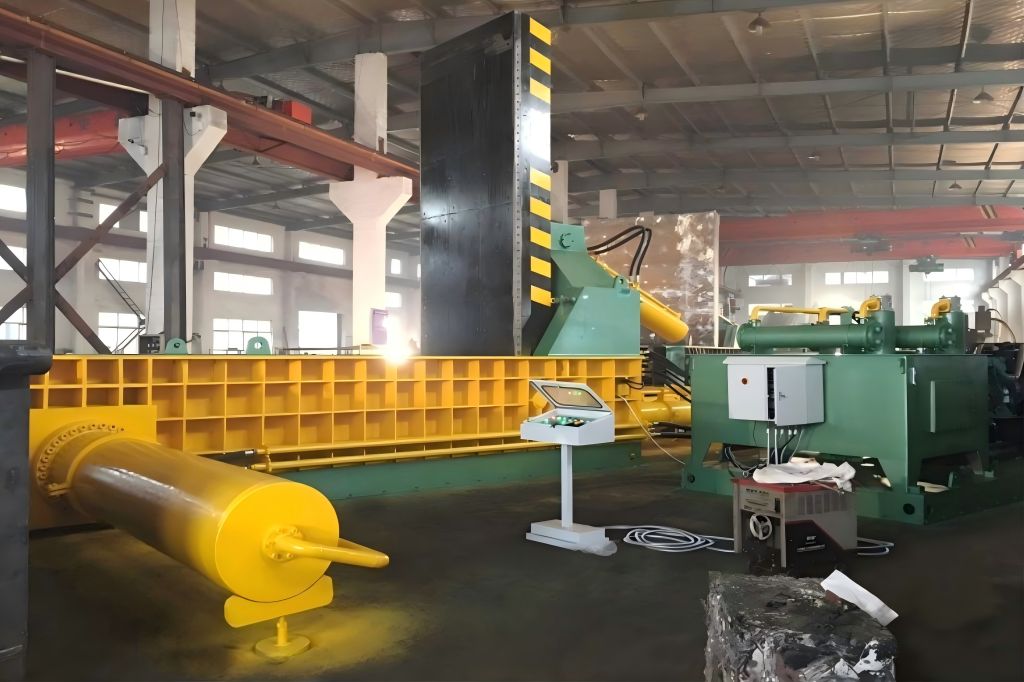In the world of recycling, especially within the scrap metal sector, the decision to invest in baler systems can significantly affect operational efficiency and profitability. With growing environmental concerns and regulatory pressures, recycling facilities are constantly evaluating their equipment choices.
This article examines the advantages and disadvantages of buying versus building scrap metal baler systems, offering insights into cost-benefit analysis, operational efficiency, and long-term sustainability.
The Role of Baler Systems in Recycling
Baler systems are vital in the recycling process, especially for scrap metal facilities. They increase the efficiency of storage and transportation by compressing scrap metal into manageable bales. The size and weight of bales often result in reduced shipping costs, while the compactness enhances the facility’s storage capabilities. Furthermore, balers help improve the overall processing time, allowing facilities to maximize throughput.

Types of Baler Systems
Before delving into the cost-benefit analysis of buying versus building, it is essential to understand the different types of baler systems available:
- Vertical Balers: Compact and efficient for smaller operations, these balers are suitable for low to medium volumes of scrap metal.
- Horizontal Balers: Designed for larger operations, horizontal balers handle higher volumes and are more efficient for big scrap metal recycling facilities.
- Automated Balers: State-of-the-art balers with automation to boost productivity and cut labor expenses. They are typically more expensive but can lead to significant long-term savings.
Cost Considerations
Buying Baler Systems
When purchasing a baler system, recycling facilities often consider the following costs:
- Initial Purchase Price: This includes the cost of the baler, installation fees, and any necessary modifications to the facility. The kind and capacity of the baler can have a big impact on the cost.
- Operational Costs: These encompass electricity usage, maintenance, and repair costs. Larger, more complex systems may incur higher operational expenses.
- Finance Options: A lot of suppliers provide financing options, which let establishments disburse the expense over a number of years. Although this can lessen the immediate financial load, interest could raise overall costs.
- Depreciation: Balers depreciate over time, and facilities must consider how this affects their financial statements and overall asset management.
Building Baler Systems
Building a baler system can be attractive for some facilities, particularly those with specific needs or existing engineering capabilities. Key cost considerations include:
- Material and Labor Costs: The price of materials required to build a baler and the labor costs involved in manufacturing it can be substantial. Custom designs may further inflate these costs.
- Time Investment: Building a baler system is a time-consuming process. Facilities must factor in the time spent on design, engineering, and assembly, which could lead to prolonged downtime.
- Technical Expertise: Facilities must have the necessary technical expertise to design and build an effective baler system. Hiring external engineers or consultants can add to costs.
- Long-term Maintenance: Custom-built systems may require specialized knowledge for repairs and maintenance, leading to increased long-term costs.
Cost-Benefit Analysis
Recycling facilities have to do a thorough cost-benefit analysis in order to make an informed conclusion. Key considerations for weighing the advantages and disadvantages of building vs purchasing a baler system are compiled in the following table.
| Factors | Buying Baler Systems | Building Baler Systems |
| Initial Costs | High initial purchase price | Variable costs based on design |
| Operational Efficiency | Generally high; proven technology | Dependent on design and engineering |
| Maintenance | Supplier support; standardized parts | Potentially high; specialized knowledge |
| Customization | Limited; options available | Highly customizable to specific needs |
| Time to Implement | Quick; installation time | Longer; design and assembly processes |
| Financing Options | Often available from suppliers | Limited financing; upfront capital needed |
| Resale Value | Depreciation over time | Potentially lower resale value |
| Scalability | Easy to upgrade or add units | Can be challenging; depends on design |
Case Studies
To illustrate these considerations, let’s examine two hypothetical recycling facilities: Facility A and Facility B.
Facility A: Buying a Baler System
Facility A is a mid-sized recycling operation with a steady flow of scrap metal. After evaluating their needs, they decide to purchase a horizontal baler from a reputable supplier. The baler costs $150,000, with an additional $15,000 for installation. Operational costs are estimated at $1,500 per month, including electricity and maintenance.
After one year, the facility experiences a 30% increase in efficiency, allowing it to process more scrap metal and reduce shipping costs. The expected lifespan of the baler is 10 years, making the total cost of ownership (TCO) approximately $180,000 over that period.
Facility B: Building a Baler System
Facility B, on the other hand, opts to build a baler system. They spend $50,000 on materials and labor, with an estimated 300 hours of engineering time. The facility’s engineers design a system tailored to their specific needs. However, the process takes six months, during which production is halted.
Once operational, Facility B realizes a 20% increase in efficiency. However, maintenance costs are higher than anticipated, averaging $2,000 per month. The estimated lifespan of the custom baler is also 10 years, bringing their TCO to around $170,000 over that period, but the initial downtime significantly impacted their overall profitability.
Decision Factors
- Time Sensitivity: If a facility needs immediate solutions, buying a system might be more advantageous than building one.
- Volume of Scrap Metal: Facilities processing larger volumes may benefit more from standardized, proven technology that can be quickly deployed.
- Customization Needs: If specific features are critical to a facility’s operations, building a baler system may provide necessary tailored solutions.
- Financial Resources: Facilities with limited capital may find financing options for purchasing more feasible than the upfront costs associated with building a system.
Conclusion
The decision to buy or build a scrap metal baler system is a complex one that depends on various factors, including operational needs, financial resources, and long-term goals. Both options have distinct advantages and challenges, and a thorough cost-benefit analysis can aid facilities in making informed choices.




